A vast amount of water has flowed down through the Vavouledo Gorge into Palea Roumata since I described a walk here in just the third Explore ! (August 2009).
And, sadly, the storms of last winter have washed away much of what I then described as “a hidden gem” and “possibly the best short walk in Western Crete.” The path through the gorge has gone, and all the wooden footbridges damaged or destroyed; many loose rocks, boulders and fallen trees now make the walk difficult, though it’s still possible.
Despite the catastrophe, another short walk from Palea Roumata, described below, amply justifies the journey from Paleochora, so it’s time to re-visit one of my favourite villages.
It’s 37 km from Paleochora to Kakopetros, roughly half-way to (or from) Chania, and from there another 4 km over to Palea Roumata, allow for a 45-minute drive. Park in the ‘platea’ below the imposing church of Agios Spiridonas.
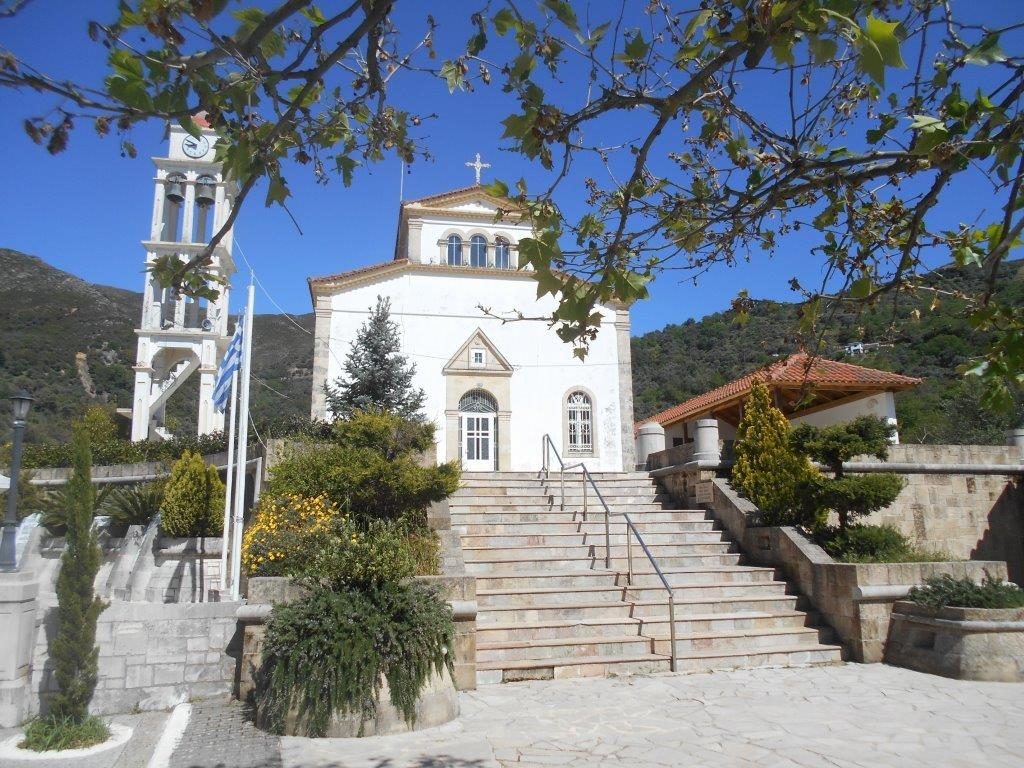
Palea Roumata consists of seventeen small ‘settlements’, described as “clinging to the slopes of the surrounding mountains …” of which Archondika is the centre. Spend some moments at the memorials ; Palea Roumata has been a centre of resistance against occupation for centuries, and has paid dearly, as the many names inscribed here bear testament. Two recent plaques commemorate the fighting (with stones) at the Battle of Crete, May 1941, and the part played by women and girls during the ensuing brutal years of 1941-44.
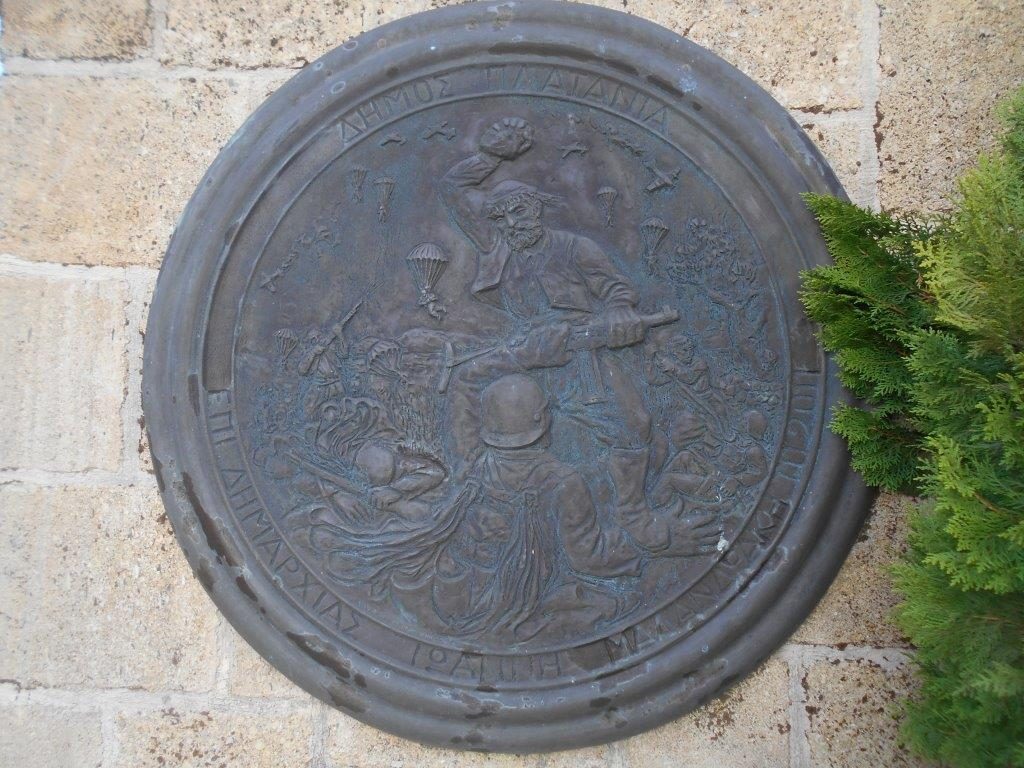
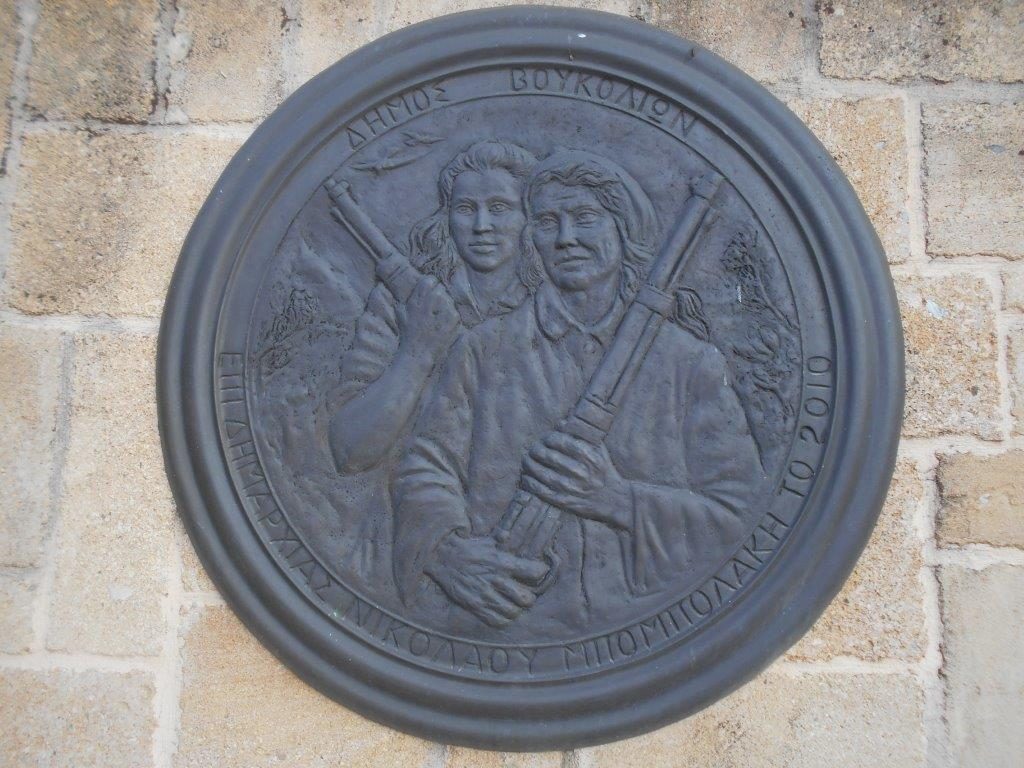
First, walk back 170m on the way you came in, to the Ancient Olive Tree of Palea Roumata, set in a small attractive roadside park. Reputedly 3000 years old, with a circumference of 10.50 metres, a hole inside the (largest) tree hid a cache of weapons during the Turkish era, and similarly before the nearby Battle of Anavos in 1941. An information board tells more.
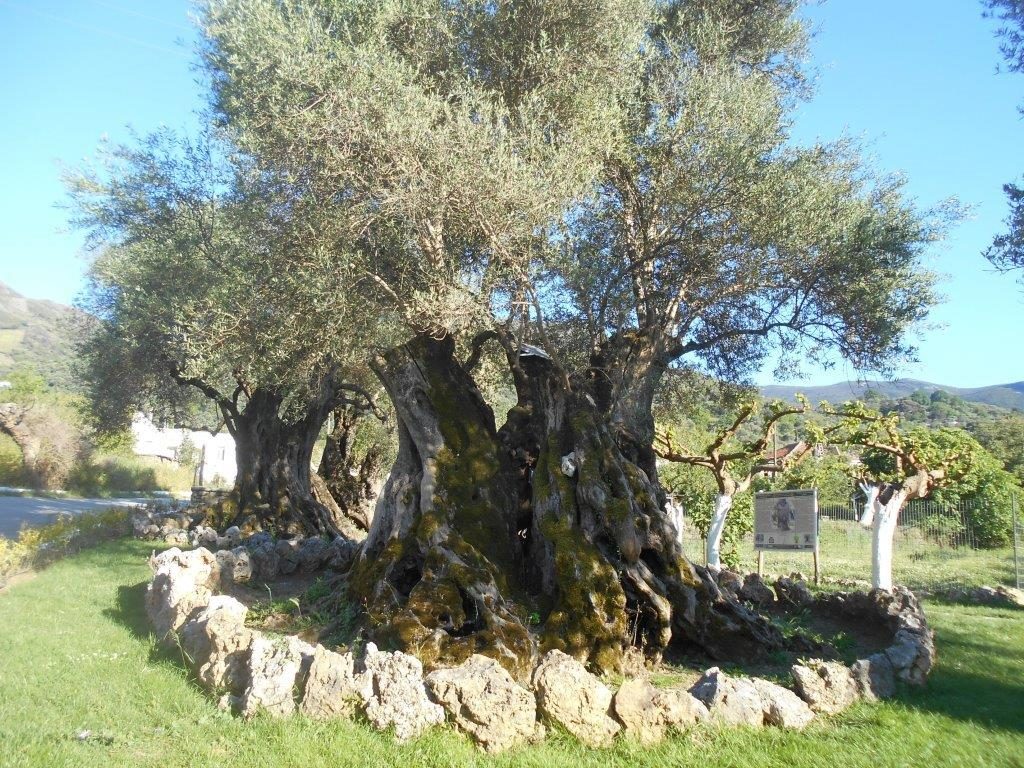
Return to the platea … and beware of the church clock, which is liable to strike (loudly) at any time, and is rarely correct – yet stands the clock at ten to nine, as on our last visit? Then walk south out of the village (signed Vavouledo Gorge 2 klm), rising steadily through olive groves and vineyards; below lies the gorge, with Lidiana across the valley.
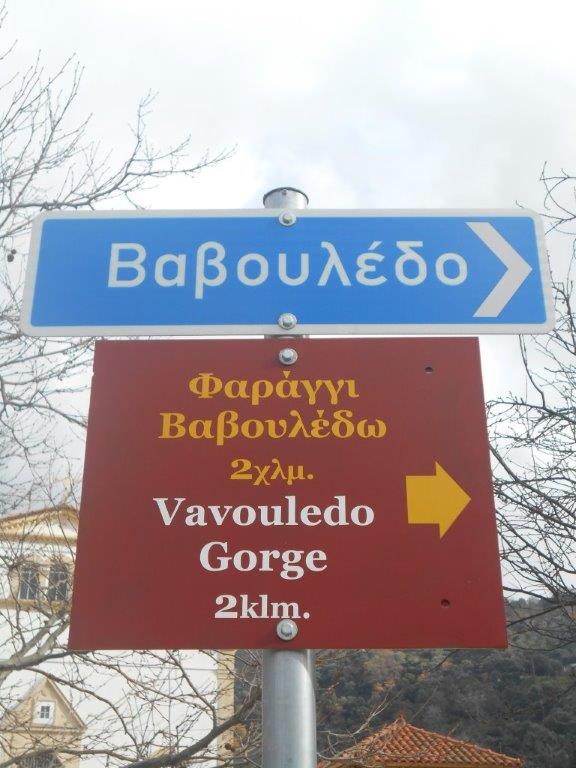
After 1 km keep right ; from here there’s a distant view of Agios Vasileios church among trees. At the next junction go right again towards Vavouledo, reached over a bridge before a short climb to the ‘settlement.’ A small cafenio is open here on summer weekends, and a signpost to the 11thC Agios Vasileios, with exceptional frescoes, just a short walk along a footpath through fields. Note that the entrance gate is often stiff, but will open with a good push, and keys are usually in the church doors.
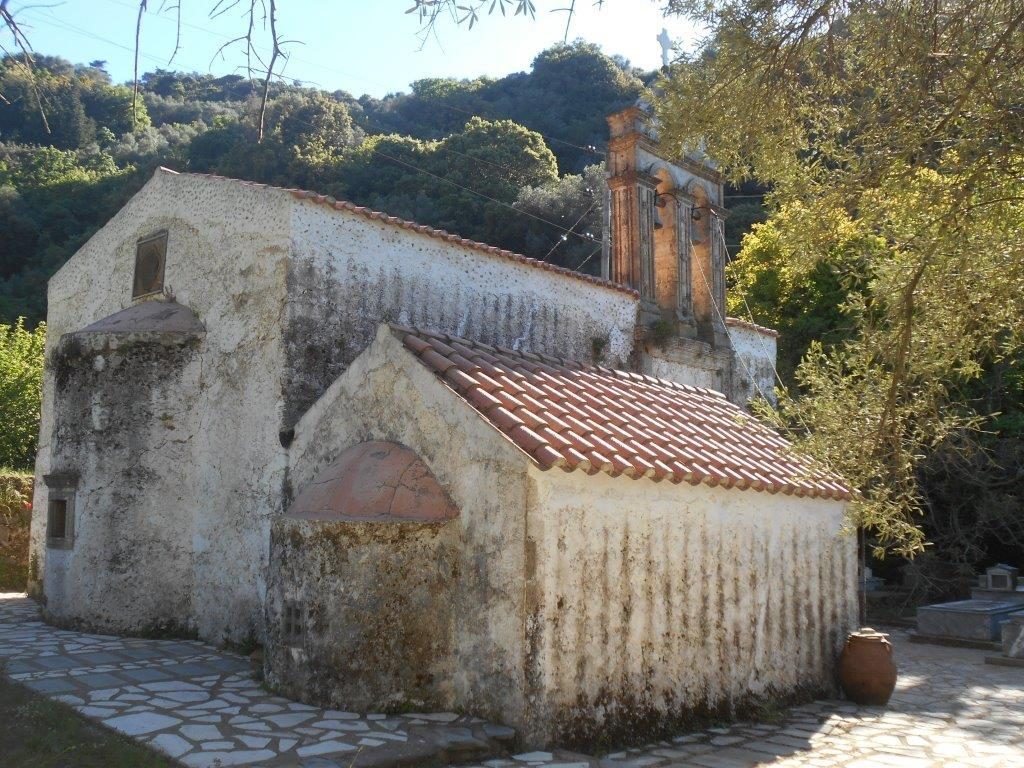
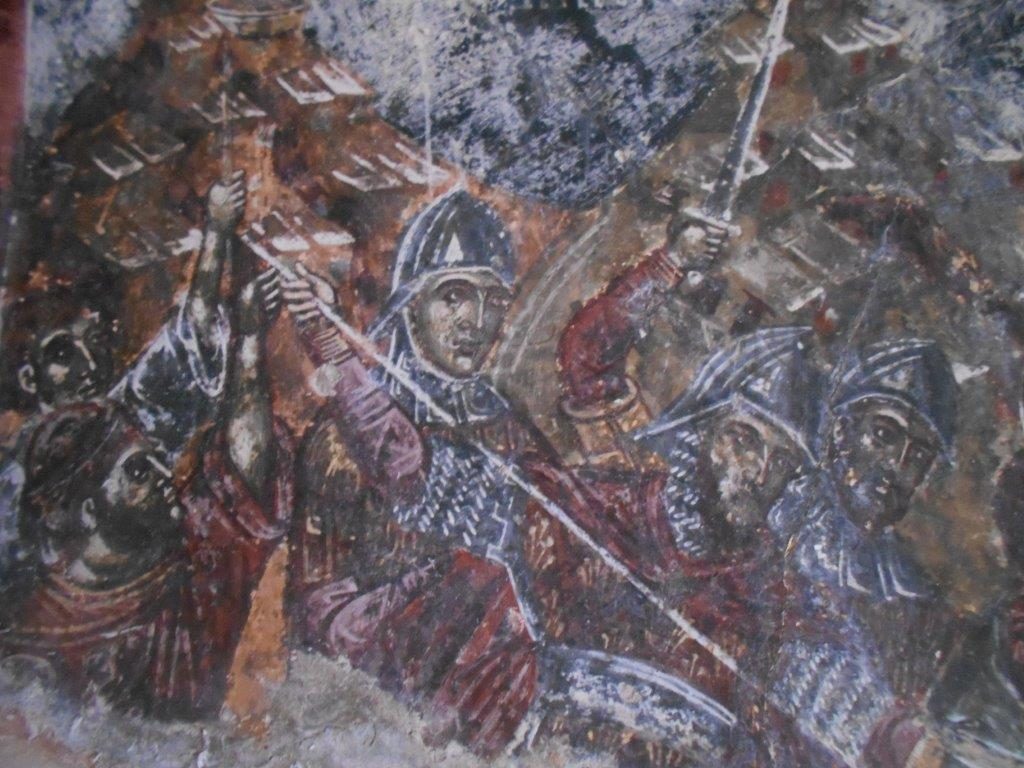
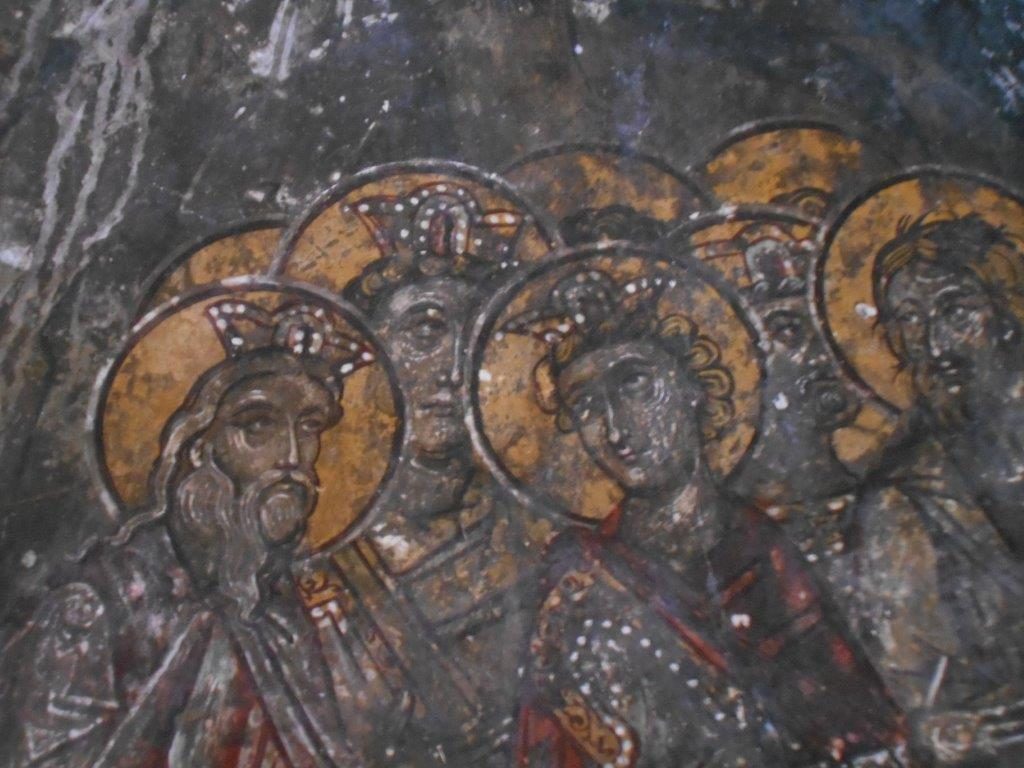
Explore down into the gorge if you will, from a path by the water tap, but remember that “courage is nought without prudence” and if/when you reach dangerously loose rocks and boulders, return to Vavouledo. As an alternative return route to Palea Roumata, follow the road back to the first junction, signed to Michaliana, and walk uphill, passing (second ‘S’ bend) a side road to Lakkos. Rising to over 500m, the road gives distant views down the valley before reaching the outlying settlement of just a few houses.

Leave the road here, and turn left on a dusty track, dropping steeply below pine trees, then even more steeply below a house to join a surfaced road. Go right here, then almost immediately left, down towards Palea Roumata.
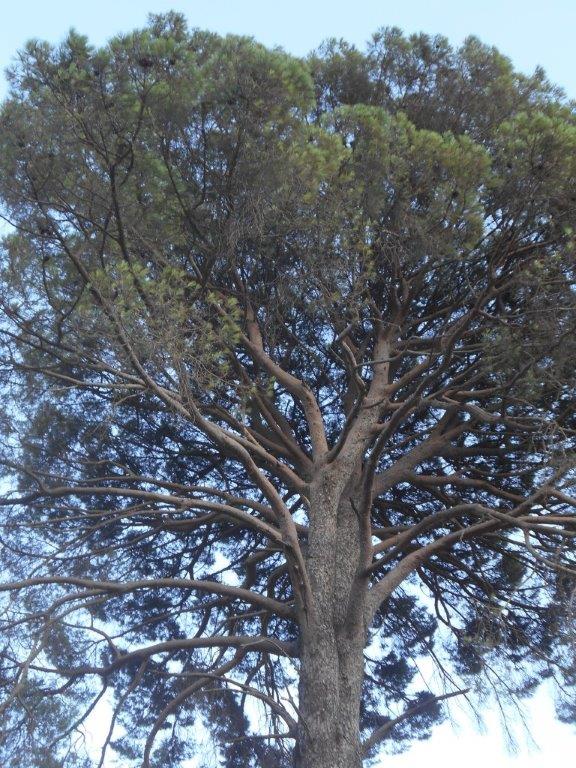
On reaching a magnificent and aptly named ‘Umbrella Pine’ – pinus pinea – turn left under the tree, and very soon reach the road you walked up earlier when leaving the village. Across, just a few metres away, is Mpompolis taverna, with Dimitris and Chrissoula ready to welcome you.
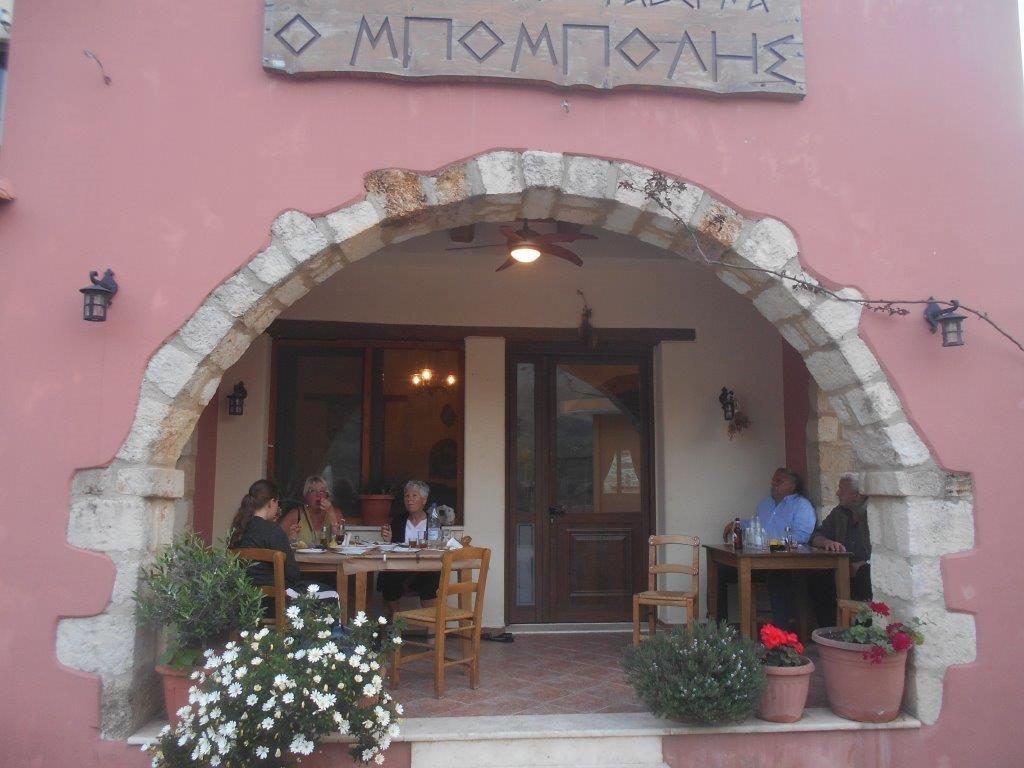
Almost everything on offer here (and there’s no ‘Menu’) will be home-grown or local produce, with freshly baked bread and olive oil, all the ingredients of a ‘horiatiki’ salad, goat, lamb, rabbit, chicken, or vegetarian ‘boureki’ with soft mizithra cheese, family wine and inevitable raki. All totally delicious, and of course the Cretan/Mediterranean diet is probably the best in the world … “that is very well known ….”
‘Kali Orexi’ – enjoy your meal, and ‘Kalo Dromo’ – a safe journey back to Paleochora.


2 comments
Lovely read again, thanks Bob
Hi Bob, it might be 15 years ago, that my daughter and me did a wonderful Walk with you around Paleohora. Now I’m Here again and I would like to ask you are still Walking and perhaps would Like to Walk with me. I stay at Oriental Bay, my telno. 0176 666 30 682. Hope to hear from you Sion, thanks in advance, Reinhilde.